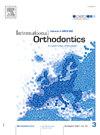Accuracy of digital vs. manual cephalometric tracing: A systematic review
IF 1.9
Q2 DENTISTRY, ORAL SURGERY & MEDICINE
引用次数: 0
Abstract
Purpose
This systematic review aimed to assess the accuracy of digital cephalometric tracing with manual hand tracing.
Methods
PubMed, SCOPUS and Web of Science databases were searched for relevant articles. After an initial search, which revealed 279 potentially relevant articles, their titles and abstracts were screened. After screening, 23 full-text articles were assessed in depth. Fifteen publications were removed from the analysis considering the predetermined inclusion criteria. The quality of the methodology of the selected 9 studies was analyzed using 12-point criteria, which included study design, measurement, and statistical analysis.
Results
The data thus collected was analyzed for reliable and reproducible variables. All studies were carried out on the digital format of lateral cephalograms. The analysis included both angular and linear measurements. The results brought about statistically significant differences in certain methods and were clinically acceptable even though they were minimal. A few measured variables were the cephalogram quality, lip posture, positioning, and difficulty in locating landmarks.
Conclusions
This review concluded that digital cephalometric tracing was equally reliable as tracing manually, with a moderate quality of evidence. This study also suggested that the literature presented here was accurate enough for clinical application. Thus, digital cephalometric analyses can potentially improve the workflow in clinical and research settings saving time and effort.
PROSPERO – registration number (CRD42024537255).
数字与手动头颅测量追踪的准确性:系统回顾
目的:本系统综述旨在评估数字头视追踪与手视追踪的准确性。方法在spubmed、SCOPUS和Web of Science数据库中检索相关文章。在初步搜索后,发现了279篇可能相关的文章,然后筛选了它们的标题和摘要。筛选后,对23篇全文文章进行深度评估。考虑到预定的纳入标准,从分析中删除了15份出版物。采用12点标准对所选9项研究的方法学质量进行分析,包括研究设计、测量和统计分析。结果所收集的数据具有可靠和可重复性。所有的研究都是在侧位脑电图的数字格式上进行的。分析包括角度和线性测量。结果在某些方法上带来了统计学上的显著差异,即使差异很小,临床也可以接受。测量的几个变量是脑电图质量、唇姿、定位和定位标志的难度。结论:本综述得出的结论是,数字头位追踪与人工追踪同样可靠,证据质量中等。本研究还表明,本文所提供的文献是足够准确的,可用于临床应用。因此,数字头颅测量分析可以潜在地改善临床和研究设置的工作流程,节省时间和精力。普洛斯彼罗-注册号(CRD42024537255)。
本文章由计算机程序翻译,如有差异,请以英文原文为准。
求助全文
约1分钟内获得全文
求助全文
来源期刊

International Orthodontics
DENTISTRY, ORAL SURGERY & MEDICINE-
CiteScore
2.50
自引率
13.30%
发文量
71
审稿时长
26 days
期刊介绍:
Une revue de référence dans le domaine de orthodontie et des disciplines frontières Your reference in dentofacial orthopedics International Orthodontics adresse aux orthodontistes, aux dentistes, aux stomatologistes, aux chirurgiens maxillo-faciaux et aux plasticiens de la face, ainsi quà leurs assistant(e)s. International Orthodontics is addressed to orthodontists, dentists, stomatologists, maxillofacial surgeons and facial plastic surgeons, as well as their assistants.
 求助内容:
求助内容: 应助结果提醒方式:
应助结果提醒方式:


